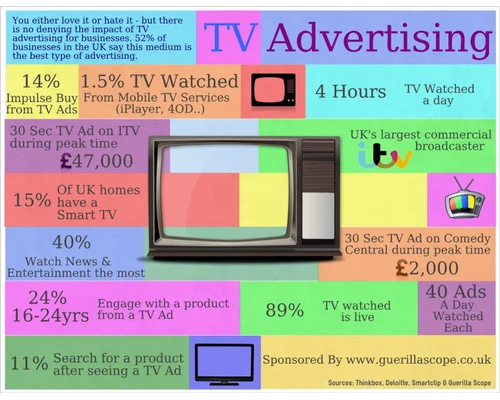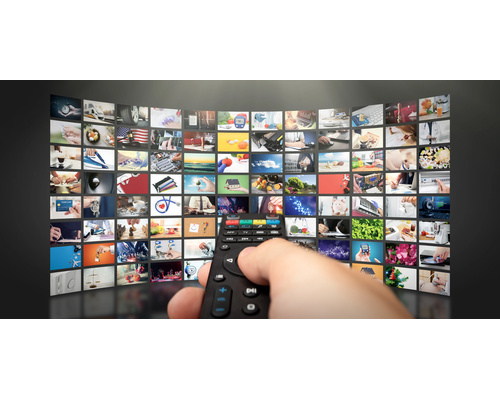Television Advertising: Its Importance and Relevance Today

- Despite a world controlled by digital media, television advertising still shows its might and is the primary way brands reach out to their audiences.
- Television is still a crowded space with millions of viewers glued to their sets, and it is inside, enabling a way for marketers to reach their respective audiences. In times when attention spans are consumed, and competition for viewers’ focus is steep, learning the subtleties of television advertising becomes more and more necessary.
- In addition, the essay will also illustrate how traditional broadcast advertising can be infused with digital measures, thereby revealing to the company their option to combine both tactics so they can achieve the highest amount of exposure and influence. Be it a business owner, a marketing specialist, or a person regular about the advertising world—this comprehensive review on television advertising will offer illuminating discussion points based on which you can devise your marketing strategies and make wiser decisions.
Understanding Television Advertising

Television advertising, through the power of a visual medium, has been an impactful way of getting across the message over the years. As brands progress to permanently imprint themselves through the unique power this medium delivers, it is imperative to acknowledge and appreciate the subtleties of works.
The Mechanics of Television Advertising

The art of television advertising hinges on several fundamental tenets: captivate the audience and effectively communicate the intended messages.
- Market Reach and Demographics: Despite a large number of U.S. households owning at least one TV, television remains a top media platform. However, the prevalence of TV in homes offers advertisers a broad market where specific demographic groups can be easily targeted, for instance, from toddlers to octogenarians, making them successful.
- Creative Storytelling: Many campaigns have made an impact through an engrossing, quite often d, dramatic story. For example, memorable examples such as the ads for the Super Bowl, which brands like Budweiser or Apple will make the audience think the sketch they did was epic.
- Time Slots and Scheduling: Advertisers should think carefully when picking the time slots as prime time is known to bring in more viewers, but at the same time, it costs them a fortune. Results of a survey show that the probability of top-rated commercial campaigns happening during prime time is twice that of off-peak periods. Therefore, commercials broadcasted during peak periods tend to engage viewers more.
Challenges and Benefits of Television Advertising
- Television advertising has proven to be a dynamic tool for bringing together the advertising world and consumers, although it is also facing setbacks. The variable nature of producing and airing advertising content on TV and its cost, which is usually very high, might also be a problem for most small businesses. On the other hand, such a commercial for 30 seconds at a significant event could cost around 1 million dollars, which may even lead to fear of a bad investment return.
- That said, it is hardly possible to record the success of a television spot through a direct mechanism, as in the case of digital ads. The success of television media mainly comes from market research and indirect measurement approaches, like questionnaires that enable the assessment of the effectiveness of an ad campaign. Also, as far as what the measurement of success encompasses, each platform has different terms of the partnership.
- However, the other side is the development of OTT platforms such as Netflix and Hulu, which have brought new technology to the audience and changed their habits. The declining traditional TV viewing patterns prompt advertisers to develop innovative strategies. The companies have now started looking into the possibilities of including products in the product placements and sponsorships they must create.
The Future of Television Advertising

Television advertising is a versatile, ever-changing medium that revolves around new technology and human behaviour preferences. The overlaps between the conventional and digital modes of advertising are vital for successful campaigns. To cover all bases, brands include omnichannel campaigns synchronising their TV promotions with the digital arm to ensure maximum touchpoint and engagement. Businesses harness the potential of data mining to provide customers with exclusive and personalised experiences tailored to them. Specifically, advertisers have access to consumer insights and are, therefore, equipped to modify their marketing messages to distinct isolated markets.
- Emerging Technologies: With the rise of augmented reality (AR) and virtual reality (VR), TV is no longer a limitation to marketing and has become more than what the potential of the old world could have been. Marketers nowadays are capable of creating real-life-like experiences through the usage of these technologies, which, therefore, results in more memorable and engaging advertisements.
In summary, understanding television advertising includes identifying its mechanics, resolving its difficulties, and seizing the opportunities of new trends. In this ever-changing environment, businesses should be up to date and always seek creativity, which is how they lure their target customers in.
Conclusion
However, television advertising is still helpful for brands that want to reach a broader audience via memorable and emotional branding messages. As the aspect of technology and how people interact and behave continue to change, it becomes more and more critical for businesses to grasp the key components and importance of television advertising if they want to become a force in their markets. Among other elements, three key areas are vital in the concept of television advertising such as:
- Broad Reach: In the ideal case, TVC is a way to advertise for brands across gender, age, and socio-economic groups of life to create visibility in the marketplace.
- Emotional Impact: The combination of the visuals and sound elements in television exposes the advertising world to creative convincing that intensifies the emotional bond with the viewers.
- Brand Recognition: By broadcasting on TV, you get regular exposure that builds equity, and thus, the name gets the required level of recognition to attract even more loyal consumers.
- Targeting Opportunities: Advances in data analysis enable advertisers to personalize messages and thus appeal to distinct customer segments, which ultimately results in higher penetration of the message and better campaign performance.
- Measurable Outcomes: Marketers can use television ad analysis to fine-tune their strategies depending on what analytics tells them about returns.
The advertising sector is undergoing a digital marketing revolution. It’s a trendy thing today, and despite the competition in the field, it remains a crucial strategic point encouraging engagement among companies using captivating brand messages generated for consumption, which leads to the establishment of customer relations, acceleration of sales and consumption, etc. Advertising not only remains an integral part of marketing but also is a media with a twist wherein that marketer who wants to court its offering, with its advancing yet traditional advertising means the most, must delve into the medium’s essence.
